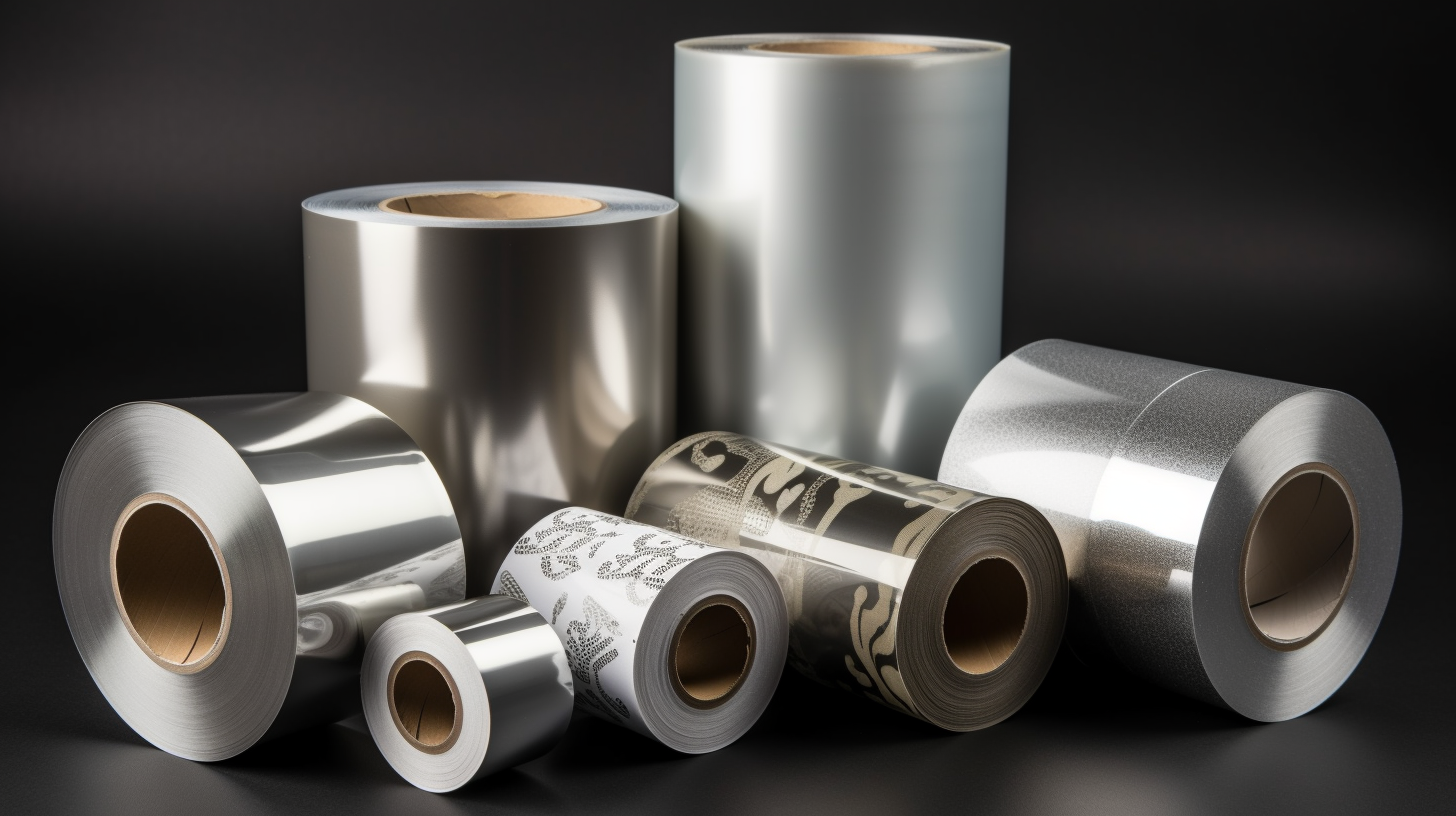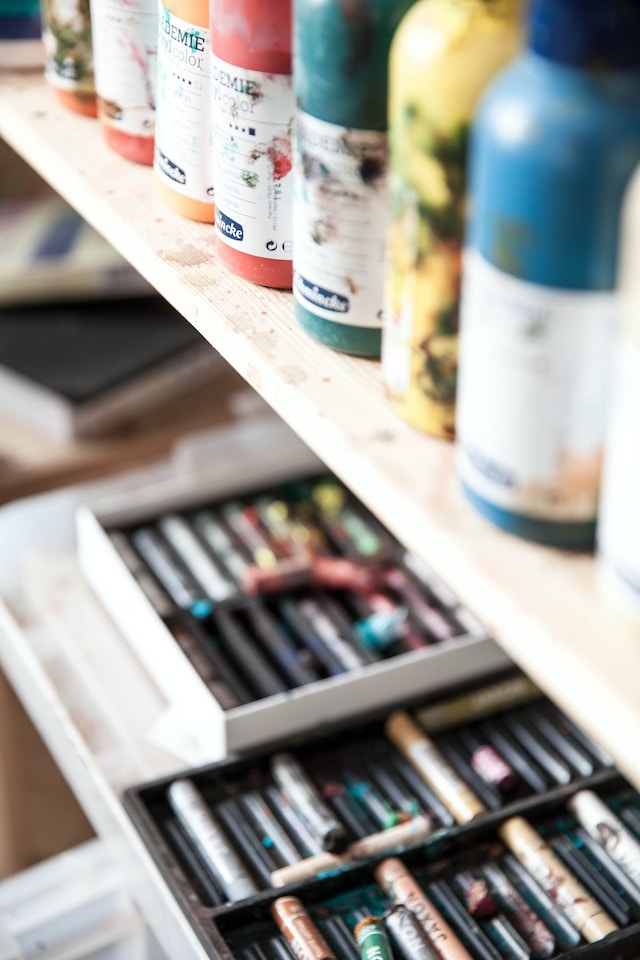Choosing a label material seems simple until you factor in moisture, oils, scuffs, storage temperatures, brand feel, and recyclability. In this guide we break down paper vs. synthetic labels (often called “film” labels) so you can match the material to your product’s real-world conditions and brand goals.
What We Mean by “Paper” and “Synthetic”
Paper roll labels come in a variety of finishes like semi-gloss, matte, textured, felt, and estate papers. They print well, feel premium to the touch, and are especially popular for products such as wine and specialty foods. Paper works best for indoor products that won’t be exposed to a lot of stress.
Synthetic (or film) labels are usually made from materials like polypropylene (BOPP), polyethylene, polyester, or vinyl. When paired with the right coating, they stand up to water, oils, scratches, and fading, making them the go-to for durability. Clear film labels can even create the sleek ‘no-label look’ that makes the design appear printed directly on the container.
Benefits of Paper Labels
Brand feel & print versatility
Paper accepts ink beautifully, supports rich embossing/debossing, and offers textures (linen, felt, estate) that signal craft and heritage. Many wineries and premium beverages lean on wet-strength paper stocks specifically engineered to resist wrinkling and edge-lift during chilling and service.
Cost-effectiveness
Paper generally costs less than film and is a smart fit when products aren’t exposed to moisture, oils, or heavy handling. You can add varnishes or laminates to improve scuff resistance, though paper still won’t match film for durability in harsh conditions.
Beverage Nuance — the ‘ice bucket’ test
Wines, beers, and ready-to-drink beverages often deal with condensation or even sit in buckets of ice. In these cases, standard paper won’t cut it. Look for wet-strength paper labels combined with beverage-grade adhesives. Many suppliers run an ‘ice bucket test’ to make sure the label can handle these real-life conditions without peeling or wrinkling.
Benefits of Synthetic (film) Labels
Durability under stress
When coated the right way, film labels are tough. They don’t tear easily, resist water and oils, and can handle humidity, temperature changes, and lots of handling. That’s why they’re often the best choice for products like cosmetics, personal care items, household goods, and anything kept in the fridge.
Clarity & conformability
Clear film labels can create that ‘printed right on the container’ look. Flexible films are also great for bottles or tubes with curves, since they bend easily and don’t wrinkle or peel at the edges.
Chemical and abrasion resistance
In industrial and high-use settings, film labels work best when they have an extra protective coating. This layer keeps the print from rubbing off and helps the label stand up to chemicals and scratches.
Reality check: ‘Water-resistant’ and ‘waterproof’ aren’t the same thing. Water-resistant labels can handle splashes or a bit of condensation, but if the product is fully exposed to water or submerged, you’ll need a true waterproof option—usually a film label with the right coating or laminate.
Performance Factors to Weigh
1) Moisture & oils
If your label will encounter condensation, bathrooms/showers, icing, or oil-based formulas (serums, balms), synthetics with appropriate topcoats and laminates are the safe choice. Wet-strength paper can work for premium beverages but must be specified correctly.
2) Temperature swings
Processes like pasteurization, cold filling, or moving products between hot and cold storage can put a lot of stress on labels and adhesives. That’s why beverage-grade papers and durable film labels are made for these conditions—but it’s always smart to test with your label supplier to be sure.
3) Abrasion & handling
During shipping, stocking, and everyday use, labels can get scratched or scuffed. Paper labels are more likely to show wear, while film labels with a protective coating usually hold up much better over time.
4) Print & finishing
Both paper and film labels print well on today’s digital and flexo presses. Paper options, especially textured ones, add a premium, hands-on feel to your branding. Film labels, on the other hand, make it easier to create special finishes like clear effects or that seamless ‘no-label’ look. Just be sure to match the coating to your printer and ink so the design stays sharp and doesn’t smear.
Industry-by-industry Guidance
Beverage (water, beer, wine)
Drinks face a tough environment—ice, condensation, and constant handling. For bottles and cans that will sit in ice or get wet, choose wet-strength paper labels or durable films that have been tested for ‘ice-bucket’ performance.
If your goal is a premium, handcrafted look, textured or felt papers work beautifully. For a sleek, modern style, clear film labels give that clean, ‘printed-on-glass’ appearance. Always double-check that the adhesive sticks well to cold, wet surfaces and test how long it holds under real conditions.
Cosmetics & personal care
Formulas with oils, alcohols, or surfactants can degrade untreated paper. Films with chemical-resistant topcoats help preserve legibility and appearance. Also make sure your layout meets FDA cosmetic labeling requirements (placement, statements, readability).
Household & cleaning
Products like detergents and cleaners are often exposed to water, chemicals, and constant handling. Film labels are the best choice here because they’re tougher, last longer, and make sure important safety information stays readable.
CBD & e-juice/vape.
These products often come into contact with oils and are carried around in pockets or bags, which can quickly wear down a label. Film labels with scuff- and oil-resistant coatings hold up best. Adding a protective laminate makes them last even longer. Your label supplier can help you choose the right coating for how the product will be used.
Sustainability & Recyclability: What Really Changes with Your Choice
Paper is renewable and often perceived as more eco-friendly, but recyclability depends on coatings, inks, and the container stream. For glass, it’s usually straightforward. For plastic packaging, labels and adhesives can make or break recyclability—especially on PET.
Films can be compatible with recycling when designed appropriately. For example, the Association of Plastic Recyclers (APR) provides tested guidance for label/adhesive/ink systems that allow PET to be reclaimed (e.g., floatable polyolefin labels, washable inks, alkali-wash-off adhesives). Ask your supplier to follow APR Critical Guidance where relevant.
Tip: If recyclability is a priority, involve your converter early. Share your container resin (PET, HDPE, glass), decoration goals (clear/no-label vs. textured paper), and the end-of-life target. They can specify APR-compatible constructions or wash-off systems to protect both performance and recycling yield.
Quick Decision Guide
Choose paper if you need:
- A tactile, premium look (linen/felt/estate).
- Cost-effective labeling for dry, indoor conditions.
- Traditional wine/spirits aesthetics using wet-strength stocks validated for condensation/ice.
Choose synthetic (film) if you need:
- Proven resistance to water, oils, abrasion, and fading.
- “No-label” clarity on clear containers or squeeze-friendly conformability.
- Better survival in bathrooms, fridges/freezers, or high-touch environments.
How Quadlabels Can Help
For some products, the best answer to paper vs. synthetic labels is a hybrid approach: a textured paper face for brand feel, paired with protective laminates, or a film label for durability with a matte varnish to soften the look. Here at Quadlabels, we print both paper and film roll labels and can add the right coatings, laminates, and digital embellishments to match your environment and brand. We’ll also help you validate performance with appropriate moisture/ice-bucket and scuff tests before you scale.
There isn’t a one-size-fits-all answer when it comes to paper vs. synthetic labels. The best choice depends on where and how your product will be used. If it faces moisture, oils, or a lot of handling, film with the right coating or laminate is usually the safer option. If your brand relies on texture and storytelling—and the product won’t be exposed to tough conditions—paper can deliver a beautiful, premium feel, especially with wet-strength options for beverages. And if sustainability is a priority, make sure your label, adhesive, and ink choices are designed to work with the recycling process of your container.



